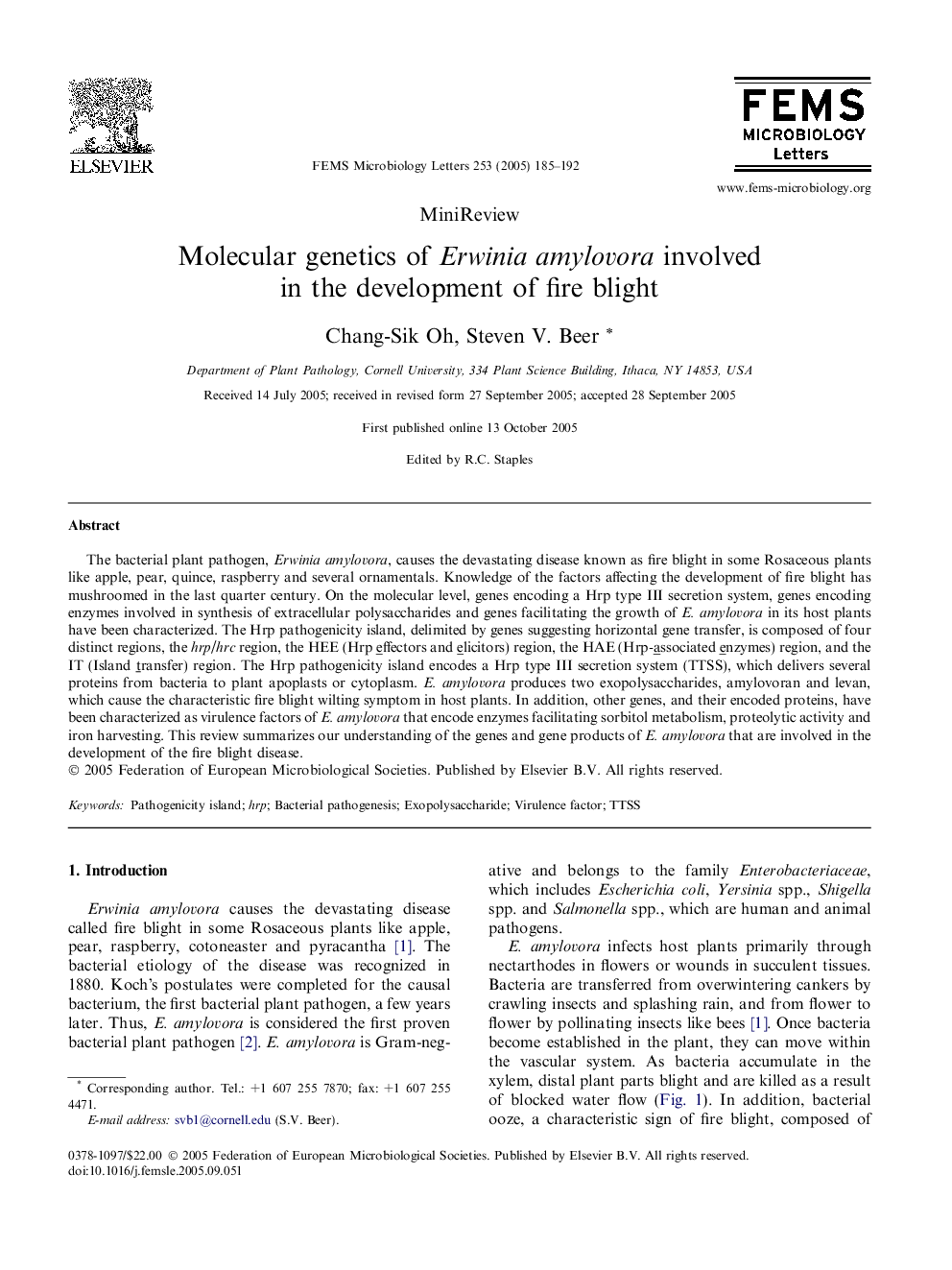| کد مقاله | کد نشریه | سال انتشار | مقاله انگلیسی | نسخه تمام متن |
|---|---|---|---|---|
| 9121232 | 1569570 | 2005 | 8 صفحه PDF | دانلود رایگان |
عنوان انگلیسی مقاله ISI
Molecular genetics of Erwinia amylovora involved in the development of fire blight
دانلود مقاله + سفارش ترجمه
دانلود مقاله ISI انگلیسی
رایگان برای ایرانیان
کلمات کلیدی
موضوعات مرتبط
علوم زیستی و بیوفناوری
بیوشیمی، ژنتیک و زیست شناسی مولکولی
ژنتیک
پیش نمایش صفحه اول مقاله

چکیده انگلیسی
The bacterial plant pathogen, Erwinia amylovora, causes the devastating disease known as fire blight in some Rosaceous plants like apple, pear, quince, raspberry and several ornamentals. Knowledge of the factors affecting the development of fire blight has mushroomed in the last quarter century. On the molecular level, genes encoding a Hrp type III secretion system, genes encoding enzymes involved in synthesis of extracellular polysaccharides and genes facilitating the growth of E. amylovora in its host plants have been characterized. The Hrp pathogenicity island, delimited by genes suggesting horizontal gene transfer, is composed of four distinct regions, the hrp/hrc region, the HEE (Hrp effectors and elicitors) region, the HAE (Hrp-associated enzymes) region, and the IT (Island transfer) region. The Hrp pathogenicity island encodes a Hrp type III secretion system (TTSS), which delivers several proteins from bacteria to plant apoplasts or cytoplasm. E. amylovora produces two exopolysaccharides, amylovoran and levan, which cause the characteristic fire blight wilting symptom in host plants. In addition, other genes, and their encoded proteins, have been characterized as virulence factors of E. amylovora that encode enzymes facilitating sorbitol metabolism, proteolytic activity and iron harvesting. This review summarizes our understanding of the genes and gene products of E. amylovora that are involved in the development of the fire blight disease.
ناشر
Database: Elsevier - ScienceDirect (ساینس دایرکت)
Journal: FEMS Microbiology Letters - Volume 253, Issue 2, 15 December 2005, Pages 185-192
Journal: FEMS Microbiology Letters - Volume 253, Issue 2, 15 December 2005, Pages 185-192
نویسندگان
Chang-Sik Oh, Steven V. Beer,